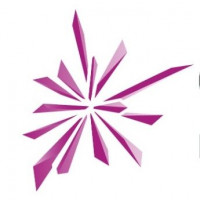-
Australia
Copyright © 2025 Powered by BCI Media Group Pty Ltd
Confirm Submission
Are you sure want to adding all Products to your Library?
Contact Detail

In 2022 members of the Siniat technical team traveled to the United States to test the Siniat range of seismic ceiling designs on a sophisticated shake table at the Pacific Earthquake Engineering Research Centre (PEER).
What is a shake table and why is it still the most effective way to test for seismic compliance?
During an earthquake the ground motions lead to various forces acting upon the structure of a building. Seismic forces are inertia forces. When an object, such as a building, experiences acceleration in an earthquake, inertia force is generated when its mass resists the acceleration. These earthquake forces are predominantly lateral forces because they apply horizontal loads to a building. Structural engineers study these forces to design solutions that help protect the building structure when an earthquake hits.
The shake table is a tried and trusted piece of equipment that simulates the forces experienced during an earthquake. The earliest shake table was invented at the University of Tokyo in 1893 and ran on a simple wheel mechanism. Modern tables are much more sophisticated and consist of a large platform that can move horizontally and vertically in different directions to replicate the ground motion caused during a seismic event.
The table is typically mounted on hydraulic actuators or other mechanical systems that can generate controlled vibrations with a range of frequencies and amplitudes. Building components and systems are assembled on the platform and usually shaken to the point of failure.
The results help engineers understand how structures withstand the forces generated by earthquakes and allow for the development of effective design and construction techniques to improve their seismic performance.
One of the advantages of a shake table is reproducibility. Researchers can repeat tests multiple times under identical conditions, which helps validate results and draw accurate conclusions. This also allows for comparative studies of different design approaches and materials.
The PEER shake table
R Centre is the largest multidirectional shaking table in the United States and among the most sophisticated in the world. It was introduced in 1972 and was the first of its kind in the world. Many of its design features were later adopted for shaking tables in Japan, Mexico, Peru, and Yugoslavia.
Using a database with signals gathered from past earthquakes around the world, the shake table can recreate the exact seismic activity with the data originally recorded. This means that systems can be tested to real-world conditions in a controlled environment.
Siniat’s testing
Siniat’s seismic designs for suspended ceilings were tested on the PEER shake table to give the technical team a better understanding of how these systems perform when subjected to seismic acceleration.
All the parts and components in the load path of the structure must have sufficient seismic performance ratings to safely transfer the seismic loads imposed from the suspended ceiling. This includes fasteners, restraints, and other connection points. Complete suspended ceiling systems were therefore constructed on the shake table and subjected to testing.
Ben Wright, Siniat’s National Technical Services Manager, explains that the PEER shake table offered the scale and scope needed to test Siniat’s systems for compliance to Australian standards.
“Seismic design is not a choice—it is a requirement of the National Construction Code and governed by a range of Australian standards and regulations. The design of non-structural building components for seismic loads is equally important as the structure itself, and also a regulatory requirement,” Ben says.
The results of the US testing have given the Technical Team the confidence to recommend Siniat’s solutions to customers and provide them with the reassurance that these systems comply to all the relevant standards.
“Customers can trust our systems because they have been proven to perform. During the testing Siniat’s suspended ceiling designs passed and even surpassed the requirements of Australian codes and standards, and often withstood accelerations on the shake table comparable to the most severe earthquakes on record,” Ben said.
What are the relevant standards?
There are several standards and regulations that govern the seismic design of suspended ceilings in Australia. The three key regulatory instruments are:
For more information about these standards and regulations, download the whitepaper Seismic Design of Suspended Ceilings: What you need to know about the National Construction Code, AS 1170.4 and AS/NZS 2785 here.



